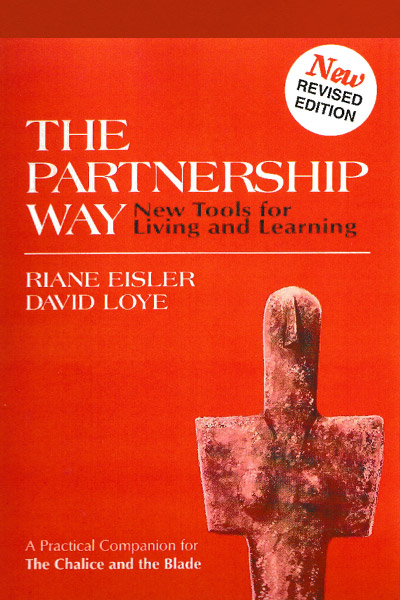

At one end of the continuum are societies oriented to the partnership model. Eisler places human societies on what she calls the partnership-domination continuum. The author compares two underlying types of social organization in which the cultural construction of gender roles and relations is key. It highlights the importance of how a society constructs relations between the male and female halves of humanity, as well as between them and their daughters and sons, taking into account findings from both the biological and social sciences showing the critical importance of the "private" sphere of family and other intimate relations in shaping beliefs and behaviors.

Ī distinguishing feature of the study of relational dynamics pays particular attention to matters marginalized or ignored in conventional male-oriented studies. Its sources include cross-cultural anthropological and sociological surveys, and studies of individual societies as well as writings by historians, analyses of laws, moral codes, art, literature, scholarship from psychology, economics, education, political science, philosophy, religious studies, archaeology, the study of myths and legends and data from more recent fields such as primatology, neuroscience, chaos theory, systems self-organizing theory, non-linear dynamics, gender studies, women's studies, and men's studies. Drawing from a trans-disciplinary database, it applies this approach to a wide-ranging exploration of how humans think, feel, and behave individually and in groups. The study of relational dynamics is an application of systems analysis: the study of how different components of living systems interact to maintain one another and the larger whole of which they are a part. In contrast to earlier studies of society, this method concerns what kinds of social systems support the human capacity for consciousness, caring, and creativity, or conversely for insensitivity, cruelty, and destructiveness. The method of social analysis in the book is multidisciplinary in its study of relational dynamics. No utopia is predicted rather, a way of structuring society in more peaceful, equitable, and sustainable ways is envisioned. Female values offer a partnership alternative with deep roots in the pre-Patriarchy paradigm of cultural evolution. Briefly her thesis is despite old narratives about an inherently flawed humanity, more and more evidence shows humanity is not doomed to perpetuate patterns of violence and oppression. The book is now in 26 foreign editions, including most European languages as well as Chinese, Japanese, Urdu, Korean, Arabic, Hebrew, and Turkish. These challenge conventional views about cultural evolution up to the time of the book's publication. The book closes with two contrasting future scenarios. She traces this tension in Western culture from prehistory to the present. Eisler proposes tension between these two underlies the span of human cultural evolution. 3 New perspective on cultural evolutionĮisler highlights the tension between what she calls the dominator or domination model and the more naturally feminine partnership model.


 0 kommentar(er)
0 kommentar(er)
